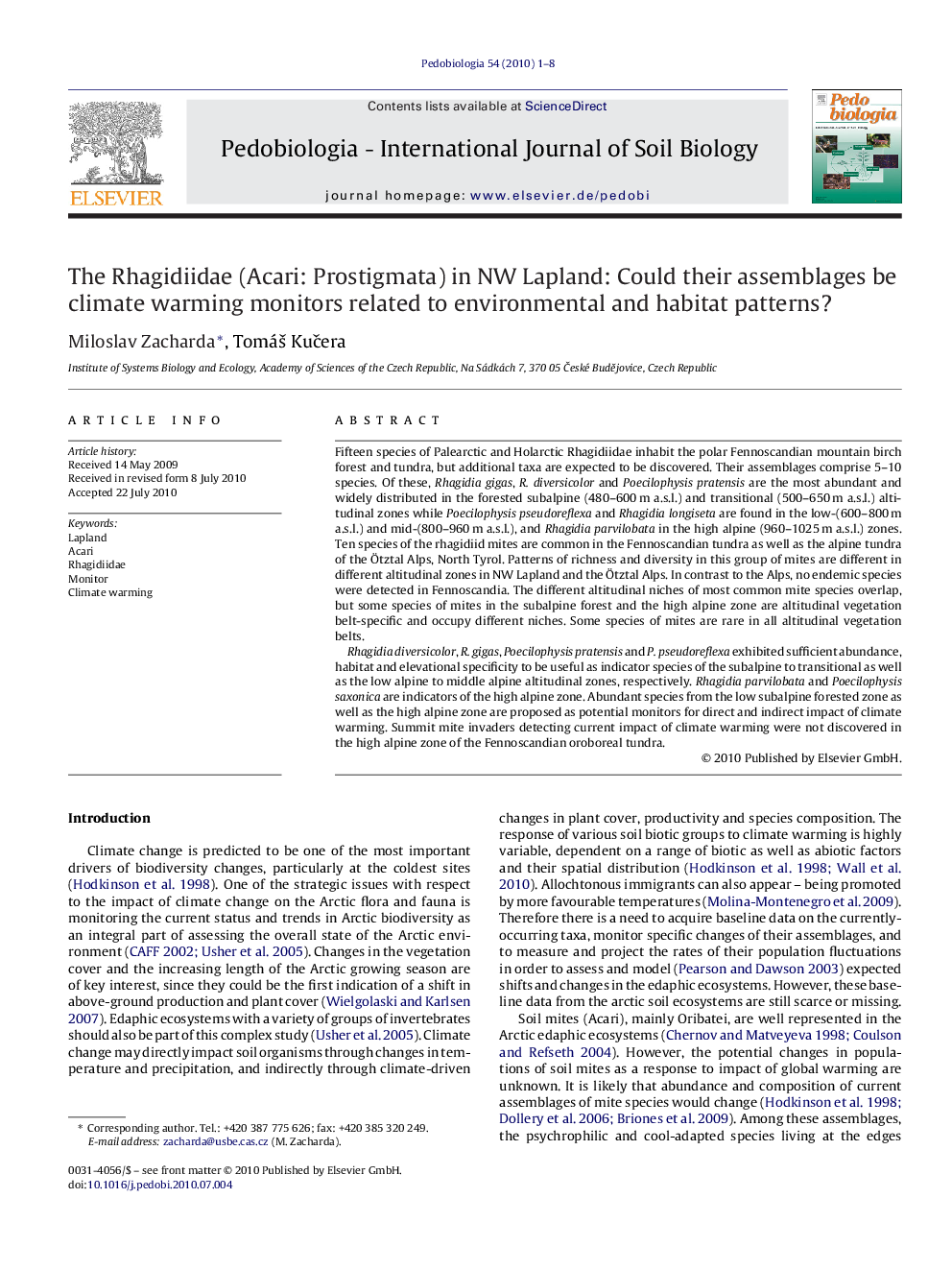| کد مقاله | کد نشریه | سال انتشار | مقاله انگلیسی | نسخه تمام متن |
|---|---|---|---|---|
| 2061233 | 1076447 | 2010 | 8 صفحه PDF | دانلود رایگان |

Fifteen species of Palearctic and Holarctic Rhagidiidae inhabit the polar Fennoscandian mountain birch forest and tundra, but additional taxa are expected to be discovered. Their assemblages comprise 5–10 species. Of these, Rhagidia gigas, R. diversicolor and Poecilophysis pratensis are the most abundant and widely distributed in the forested subalpine (480–600 m a.s.l.) and transitional (500–650 m a.s.l.) altitudinal zones while Poecilophysis pseudoreflexa and Rhagidia longiseta are found in the low-(600–800 m a.s.l.) and mid-(800–960 m a.s.l.), and Rhagidia parvilobata in the high alpine (960–1025 m a.s.l.) zones. Ten species of the rhagidiid mites are common in the Fennoscandian tundra as well as the alpine tundra of the Ötztal Alps, North Tyrol. Patterns of richness and diversity in this group of mites are different in different altitudinal zones in NW Lapland and the Ötztal Alps. In contrast to the Alps, no endemic species were detected in Fennoscandia. The different altitudinal niches of most common mite species overlap, but some species of mites in the subalpine forest and the high alpine zone are altitudinal vegetation belt-specific and occupy different niches. Some species of mites are rare in all altitudinal vegetation belts.Rhagidia diversicolor, R. gigas, Poecilophysis pratensis and P. pseudoreflexa exhibited sufficient abundance, habitat and elevational specificity to be useful as indicator species of the subalpine to transitional as well as the low alpine to middle alpine altitudinal zones, respectively. Rhagidia parvilobata and Poecilophysis saxonica are indicators of the high alpine zone. Abundant species from the low subalpine forested zone as well as the high alpine zone are proposed as potential monitors for direct and indirect impact of climate warming. Summit mite invaders detecting current impact of climate warming were not discovered in the high alpine zone of the Fennoscandian oroboreal tundra.
Journal: Pedobiologia - Volume 54, Issue 1, 10 December 2010, Pages 1–8